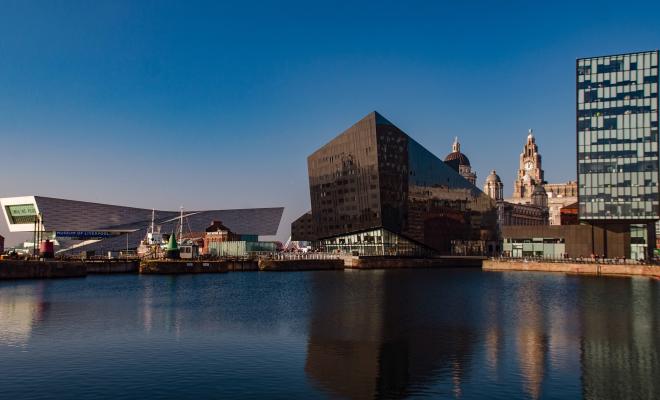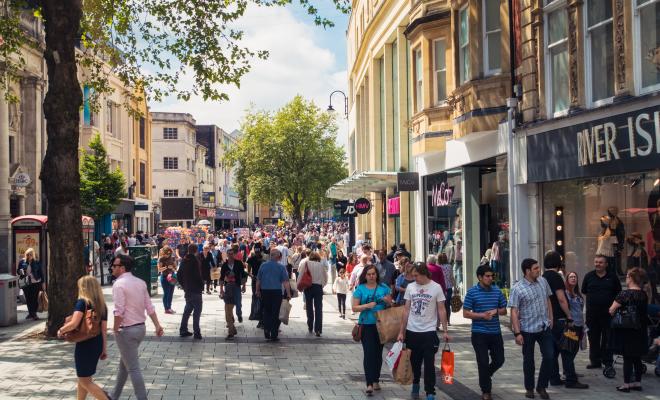20 Sep 2024
How is Action 4 tackling the climate crisis?
Lewes’ climate change and sustainability strategy sets measurable goals to guide climate action up until 2030, with interim targets also defined for 2025 and earlier. The goals set out a clear challenge for the council and local area to work towards and provide a benchmark for performance reporting. The strategy was created in 2020, after the authority declared a climate emergency in 2019.
The targets are focused on the council’s central vision to get to net-zero carbon emissions as well as building local resilience to climate change and tackling the area’s ecological emergency. The council determined three key approaches needed to achieve this vision:
- reducing demand (on energy, travel, waste, consumption of meat and dairy etc.)
- decarbonising energy
- tackling residual emissions (eg, community energy and woodland creation).
Initial research into these three areas revealed a need to cut carbon emissions by 458,000 tonnes of carbon dioxide equivalent (CO2e).
To deliver against these key areas, the council agreed upon a set of clearly defined targets after running panel sessions with local climate experts. The goals are far-reaching and cover seven strategic areas, including:
- growing the green economy through local skills and procurement,
- energy and the built environment,
- sustainable travel,
- biodiversity
- waste.
The goals and targets set by Lewes have the potential to influence a wider area due to the sharing of key staff between Lewes District and Eastbourne Borough Councils. Despite the back-office merger in 2015, they remain politically and economically independent, while also setting their own climate targets and individual climate action plans.
Strategic goals set for 2030 in Lewes
- Energy and the built environment: build and encouraged affordable, energy-efficient and climate-resilient homes.
- Sustainable transport and air quality: improve air quality and reduce carbon emissions by reducing reliance on cars, and the need for personal car ownership.
- Biodiversity: ensure all developments maximise the opportunities for well-considered net gains in biodiversity. Increase biodiversity on council-owned and managed landholdings.
- Agriculture and food: work in partnership with others to educate and enable residents to access affordable, local and seasonal food, through supporting opportunities for local production and distribution.
- Reducing emissions from waste: reduce emissions from waste collection. Increase the proportion of the waste collected by the council that is recycled, and reduce the emissions from this activity where the council can influence and control them – creating a zero carbon waste fleet by 2030.
- Water: work in partnership with others to achieve reduced water consumption in the district, conserving and protecting our water resources, including the local aquifer.
- Circular economy and community wealth: enact a sustainable procurement policy that facilitates local supply chains and encourages a circular economy.
To reach these goals, interim targets have been set for 2025 or earlier. They include:
- Energy and the built environment: Increase solar energy capacity by 12 MW across the district, and achieve a 60% reduction in council carbon emissions, by 2025.
- Sustainable transport and air quality: install electric vehicle (EV) charge points and cycle parking in all council car parks by 2025.
- Biodiversity: ensure all major developments achieve at least 20% biodiversity net gain no later than 2025.
- Agriculture and food: Engage with all council tenants about food growing and create governance and draft strategy for a local food partnership by 2022.
- Reducing emissions from waste: ensure that 55% of waste is recycled by 2025.
- Water: support Southern Water to deliver up to 50,000 water efficiency audits by the end of 2021..
- Circular economy and community wealth: ensure that community investment in local projects is possible no later than 2025.
What impact has the project had?
Lewes provides annual updates outlining the progress against key goals and targets. Alongside this, a set of individual indicators will be used to measure the extent to which the council is on track to reach its goals up until 2030.
Indicators for reducing carbon emissions include:
- CO2 emissions per sector
- solar generation capacity
- the number of EV charging points.
- average SAP rating (energy performance) of council housing stock
- number of trees planted.
Although it's early for demonstrating the impact of the targets set out, there are some examples of notable projects that are beginning to deliver on the council’s goals.
- Supporting OVESCO, a local renewable energy co-op, to develop a solar farm of around 17 MW capacity generating approximately 20,000 MW a year. The council has made available a loan of up to £155,000 to support pre-planning application studies for the solar farm. Its involvement here will also help to stimulate demand in local supply chains, supporting local jobs in the solar energy industry.
- New sustainable procurement strategies are also starting to have an impact on the development of 13 highly sustainable council homes in Newhaven. The modular flats, which include solar panels that feed into high tech batteries, have been built by a local employer. The company designs its properties and manufactures its components in a nearby factory, with 60% of the project’s workforce coming from the local college.
- Both Lewes District and Eastbourne Borough councils are looking into creating a local Green Bond scheme for raising finance for climate action after the successful completion of a Local Government Association grant-funded "Financing Net-Zero" research project with the University of Sussex. This was through the 2021 Net Zero Innovation Programme.
What made this work?
Local expertise and local authority tools
The local authority managed to achieve a set of far-reaching, balanced sustainability goals by consulting local experts including universities, planning experts and consultancy firms.
The council worked with consultancy firm Anthesis to calculate the district’s carbon footprint, building upon the local authority emissions tool "Scatter". Anthesis then provided further insight and analysis which enabled the council to establish strategic themes for reducing emissions.
Over eight months, specific goals and targets for each theme were debated at expert panel sessions made up of councillors and local experts. Considerations included what the council can commit to, what would be appropriate and what is realistically achievable.
Support from councillors
The expert panel sessions were supported by all local politicians who were engaged throughout the process and played key roles in panel sessions.
National partner
The Centre for Local Economic Strategies was a significant partner in supporting the local authority to develop community wealth building approaches, a people-focused strategy that aims to retain economic benefits locally. This now forms the core of the council's approach to growing the green economy.
What resources were needed?
Lewes District Council has a designated officer tasked with reporting on progress against climate and nature targets. In addition, a working group of about 12 council officers across multiple departments has contributed to the development of the local authority’s key goals. This approach was a lower resource alternative to having a specific team just focused on climate change and sustainability.
The goals are now embedded within the remit of all officer roles at the council, making sustainability and climate change part of everyone’s work.
Lessons from Lewes
A key learning from Lewes District Council is that research, goal setting and action takes longer than is first perceived. This is important to note when setting interim targets and ensuring that the ambition that a local authority demonstrates is achievable.
It’s important to be realistic about what a council can achieve and not over-promise. In many areas, the role of a local authority may be to facilitate action by others, as demonstrated through Lewes' approach to decarbonising local energy. By being honest and open about what is achievable, and the need for others to act, councils can create long-term goals that can be met.
Useful information
For more information on how Lewes set achievable short-term goals, contact Kate Richardson, Sustainability Lead at Lewes District Council.
Friends of the Earth's view
Setting targets is key to achieving goals. If all the goals are long term, you run the risk of delaying urgent action until a later date, so it’s good that Lewes District Council is setting out interim targets, to ensure progress is made.
Lewes District Council drew on the expertise of local and national partners to help with target setting. Councils should also involve their local communities in decision making related to their climate action plans (Action 6 of the Climate Action Plan).
Friends of the Earth is showcasing specific examples of good practice in tackling climate change, but that doesn’t mean we endorse everything that a council is doing.
This case study was produced by Ashden and Friends of the Earth. Any references to national policy in this case study relate to policy under the previous government and reflect the policy context in which the council was operating at the time.





